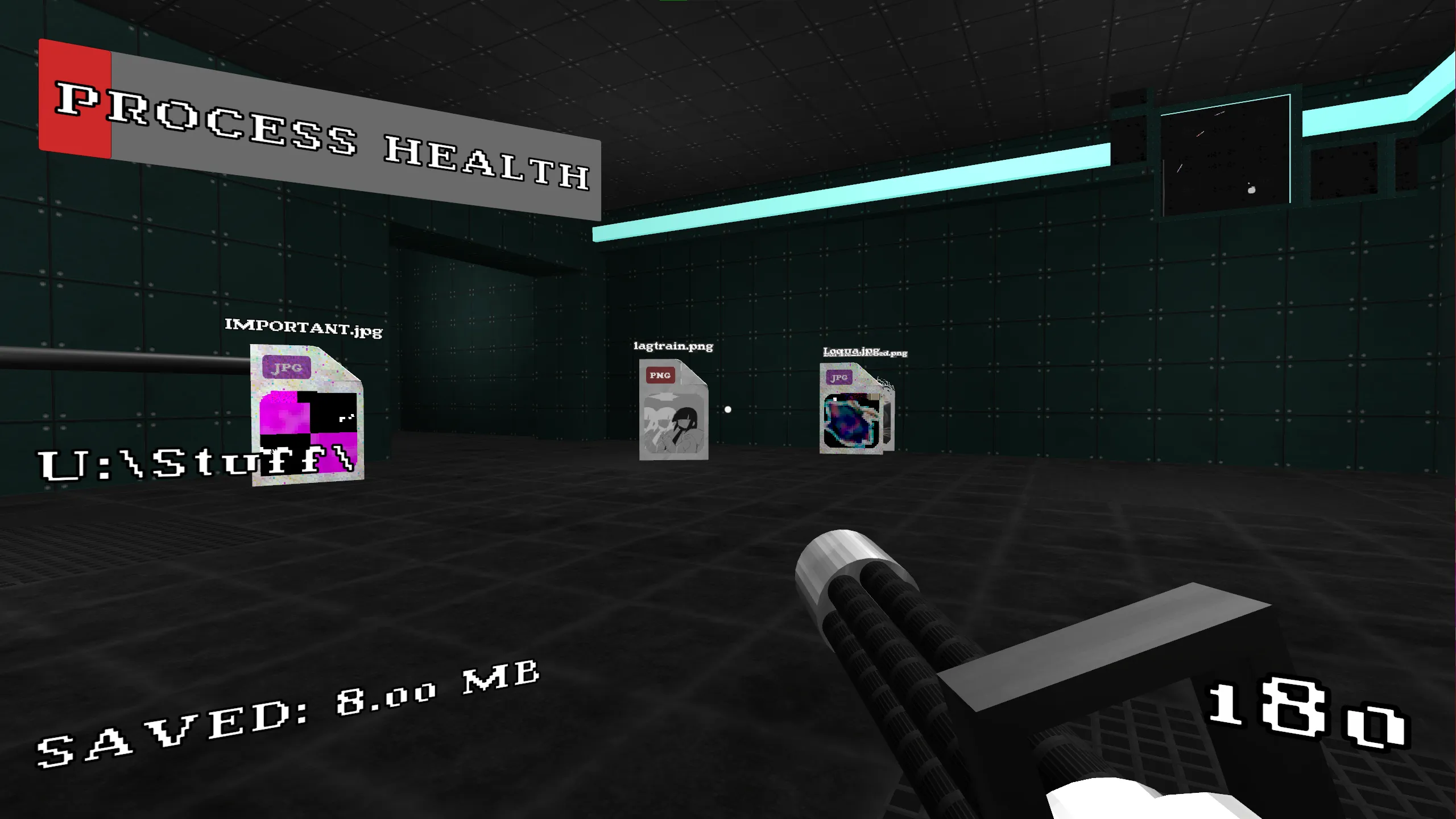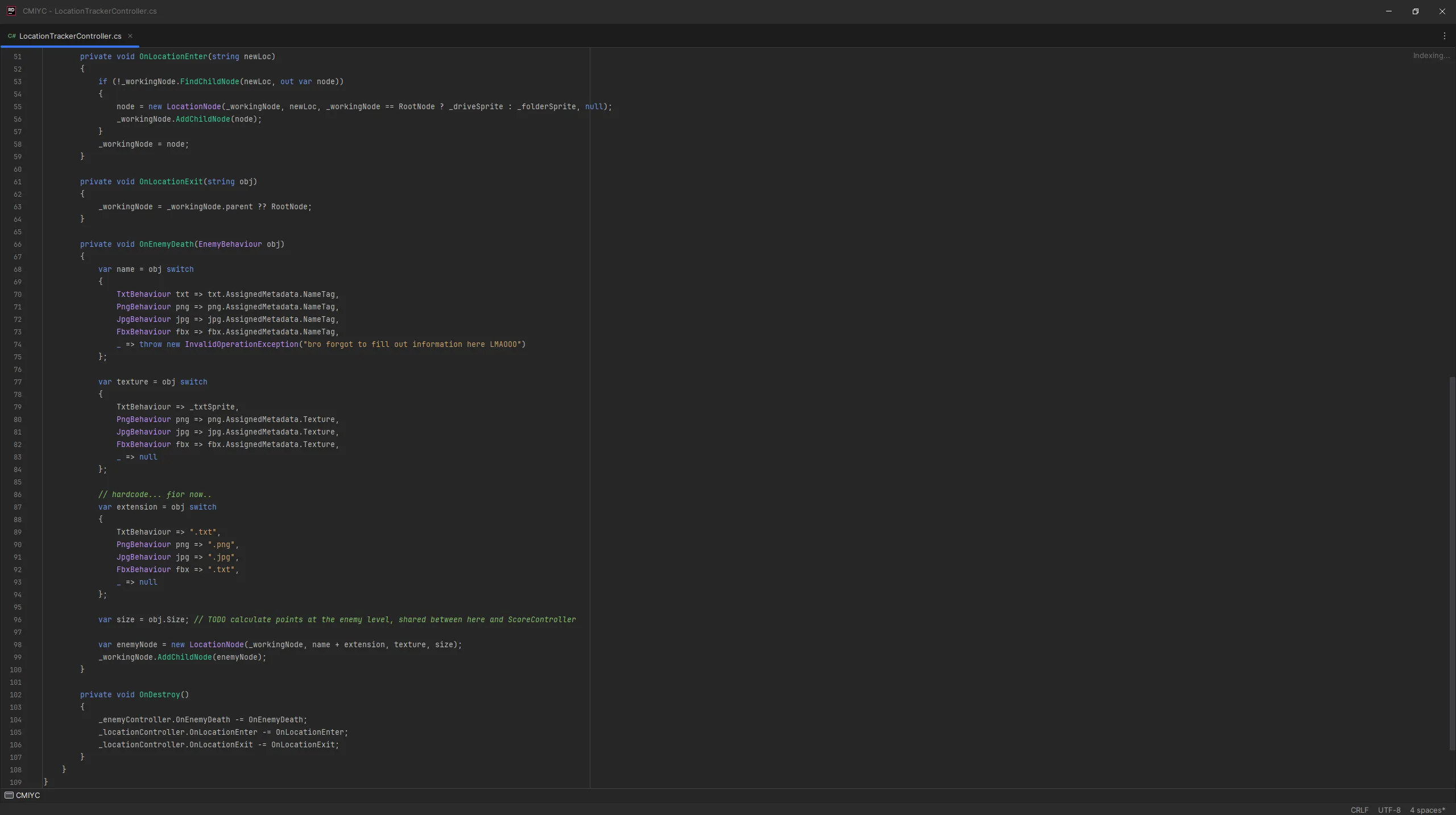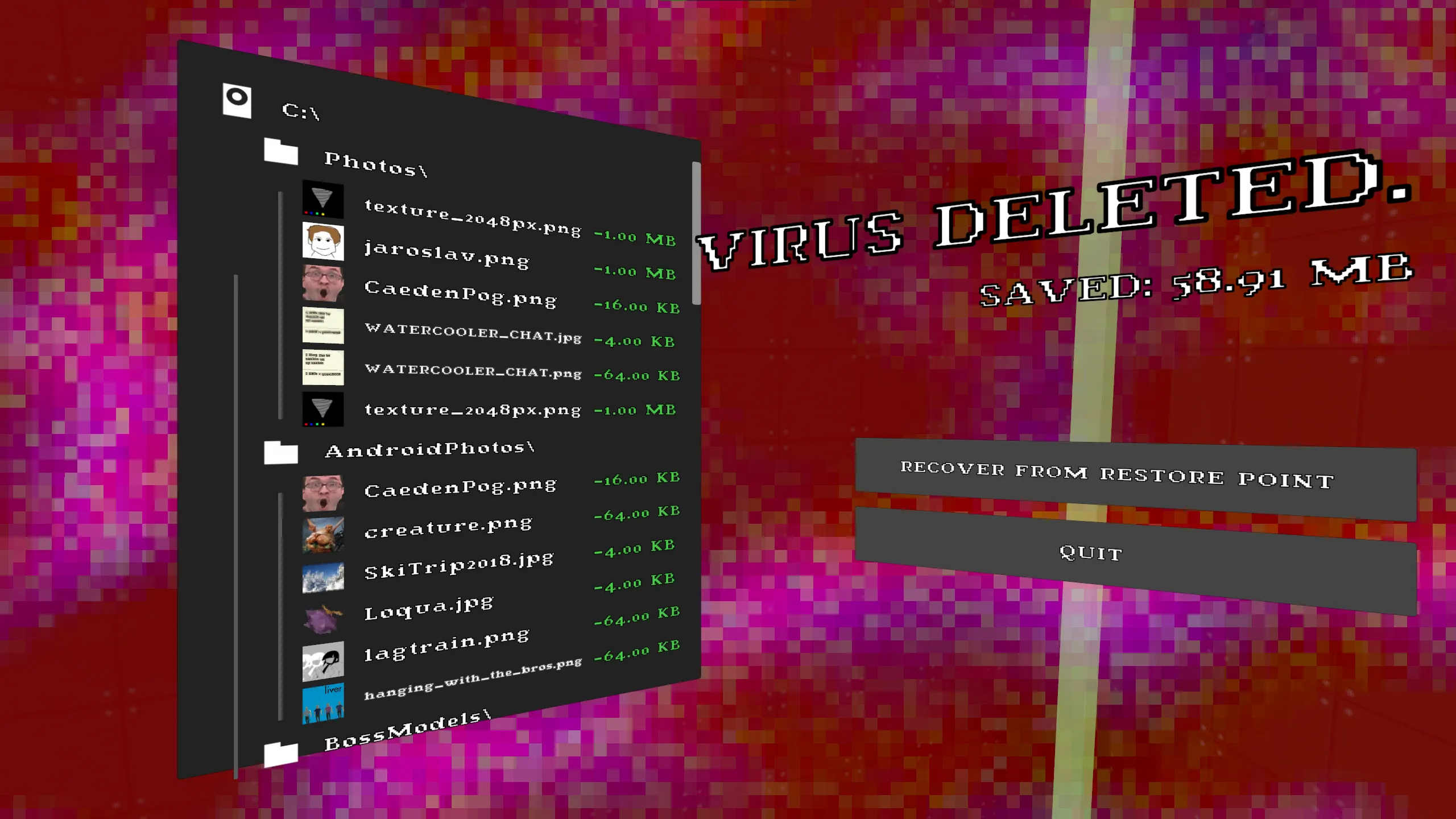
With the successes of past Ludum Dare projects Lunaculture and Liver Die, my ragtag group of developer friends felt confident heading into the 54th Ludum Dare game jam. While past Ludum Dares presented challenges and stress, with two game jams already under our belt, we felt confident in our ability to produce a stand-out game.
Besides, our team had 8 people. What could possibly go wrong?
Haha…
Suffice to say, this Ludum Dare jam was a harsh reminder of the realities of game development. We ran into a lot of problems, panics, and stress; the fact we were able to finish this game on-time should be considered lucky. Nonetheless, this jam was extremely valuable experience, even if the moment-to-moment experience wasn’t as good as our previous entries.
Primary Technologies:
Rationale Behind Technology Choices: Unity was chosen for its rapid prototyping capabilities and our team’s collective familiarity with the engine. C# provided the flexibility needed for quick iteration during the time-constrained jam environment. The decision to use Git for version control proved crucial for managing work across our large team, though coordination challenges emerged as the project progressed.

The very first problem hit us right as the jam began. Due to illness or general disinterest, some members of the team didn’t participate. 5 people were expected to complete a jam scoped for 8-9 people. Of the people who could participate, not all of us had the time to commit, either.
Key Technical Issues:
Project Management Failures:
Team Dynamics: Overall, the amount of work you can achieve is not linear with the amount of members on a team. Adding more people to a project doesn’t automatically increase productivity and can sometimes introduce coordination overhead that reduces overall efficiency.
Scope Management: This Ludum Dare game jam served as a healthy reminder to limit the scope of a jam game, no matter how many people may or may not be available to help. Time constraints in game jams require aggressive feature cutting and prioritization of core gameplay loops.
Technical Architecture: We learned the importance of establishing core systems early and integrating continuously rather than building in isolation. Late integration leads to cascading problems that are difficult to resolve under time pressure.
While I’m happy we were able to complete our entry on time, and didn’t score too terribly either, it’s certainly an experience I’d like to not repeat in future game jams.
Jam Results:
Long-term Value: Despite the stressful development process, Cache Me If You Can served as a valuable learning experience in project management, team coordination, and the importance of maintaining realistic scope under pressure. The lessons learned from this challenging jam informed our approach to subsequent collaborative projects.
